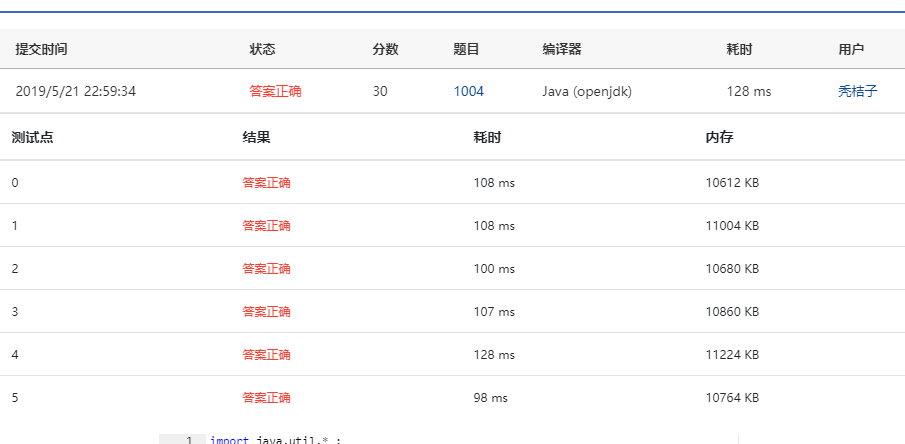A family hierarchy is usually presented by a pedigree tree. Your job is to count those family members who have no child.
Input Specification:
Each input file contains one test case. Each case starts with a line containing 0, the number of nodes in a tree, and M (<), the number of non-leaf nodes. Then M lines follow, each in the format:
ID K ID[1] ID[2] ... ID[K]
where ID is a two-digit number representing a given non-leaf node, K is the number of its children, followed by a sequence of two-digit ID's of its children. For the sake of simplicity, let us fix the root ID to be 01.
The input ends with N being 0. That case must NOT be processed.
Output Specification:
For each test case, you are supposed to count those family members who have no child for every seniority level starting from the root. The numbers must be printed in a line, separated by a space, and there must be no extra space at the end of each line.
The sample case represents a tree with only 2 nodes, where 01 is the root and 02 is its only child. Hence on the root 01 level, there is 0 leaf node; and on the next level, there is 1 leaf node. Then we should output 0 1 in a line.
Sample Input:
2 1
01 1 02
Sample Output:
0 1
import java.util.* ; public class Main{ static class Node{ int id; Queue<Node> children; Node(int id){ this.id=id; } } static HashMap<Integer,Node> tree; static int N;//树的节点个数 static int M;//有孩子的节点数 public static void main(String[] args) { Scanner sc = new Scanner(System.in); N = sc.nextInt(); M = sc.nextInt(); tree = new HashMap<>(); for(int i=0;i<M;i++){ int id=sc.nextInt(); int K = sc.nextInt(); Node node = new Node(id); Queue<Node> children = new LinkedList<>(); for(int j=0;j<K;j++){ Node no = new Node(sc.nextInt()); children.offer(no); } node.children=children; tree.put(id,node); } Queue<Node> que =new LinkedList<>(); que.add(tree.get(1)); BFS(que); } public static void BFS(Queue<Node> que){ int len = 0; Queue<Node> NextQue = new LinkedList<>(); while(que.size()!=0){ Node node = que.poll(); if(tree.size()==0||!tree.containsKey(node.id)){ len++; }else{ NextQue.addAll(tree.get(node.id).children); } } if(NextQue.size()==0){ System.out.print(len); } else { System.out.print(len+" "); BFS(NextQue); } } }
思路为BFS。
HashMap建树。
